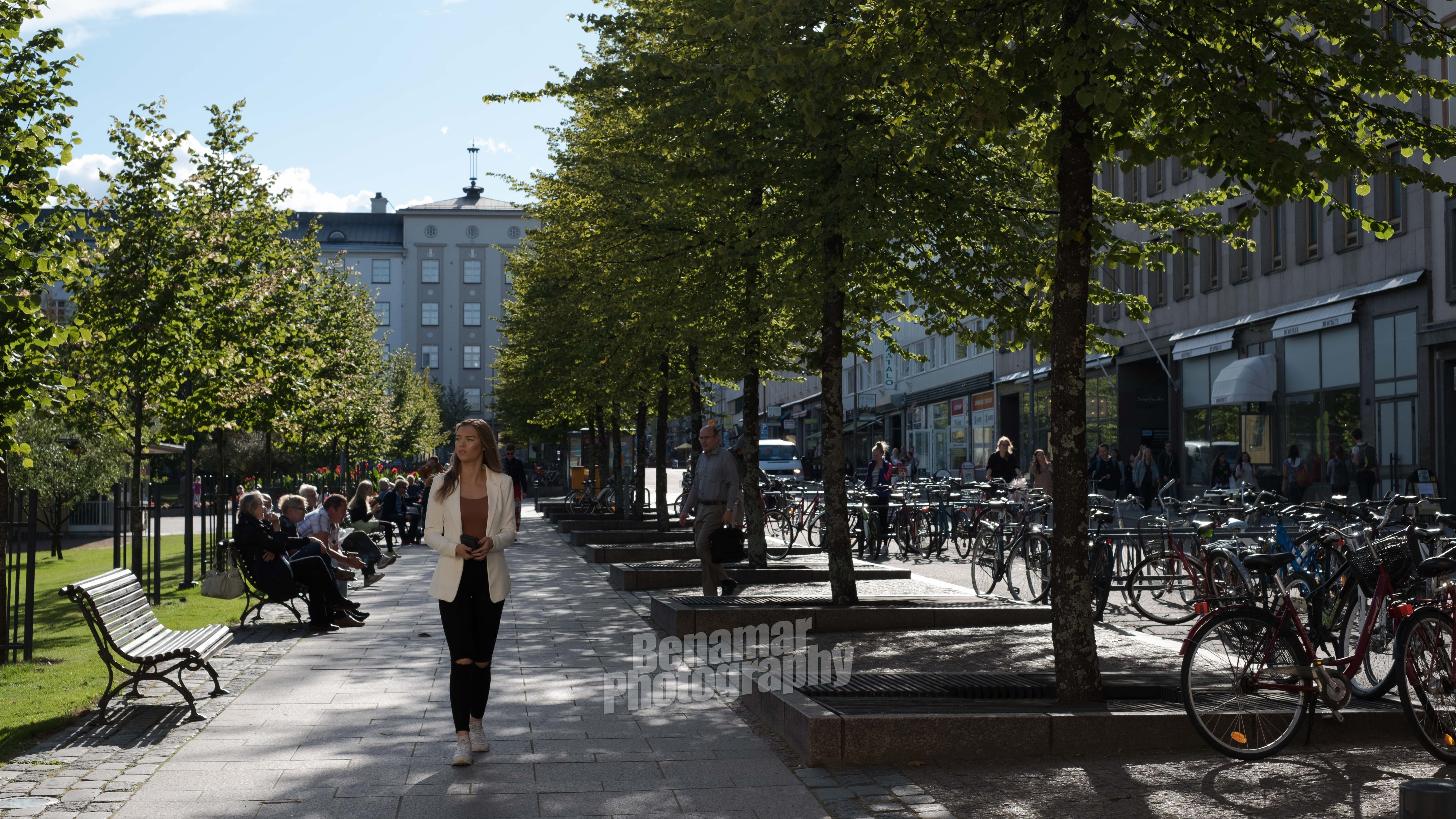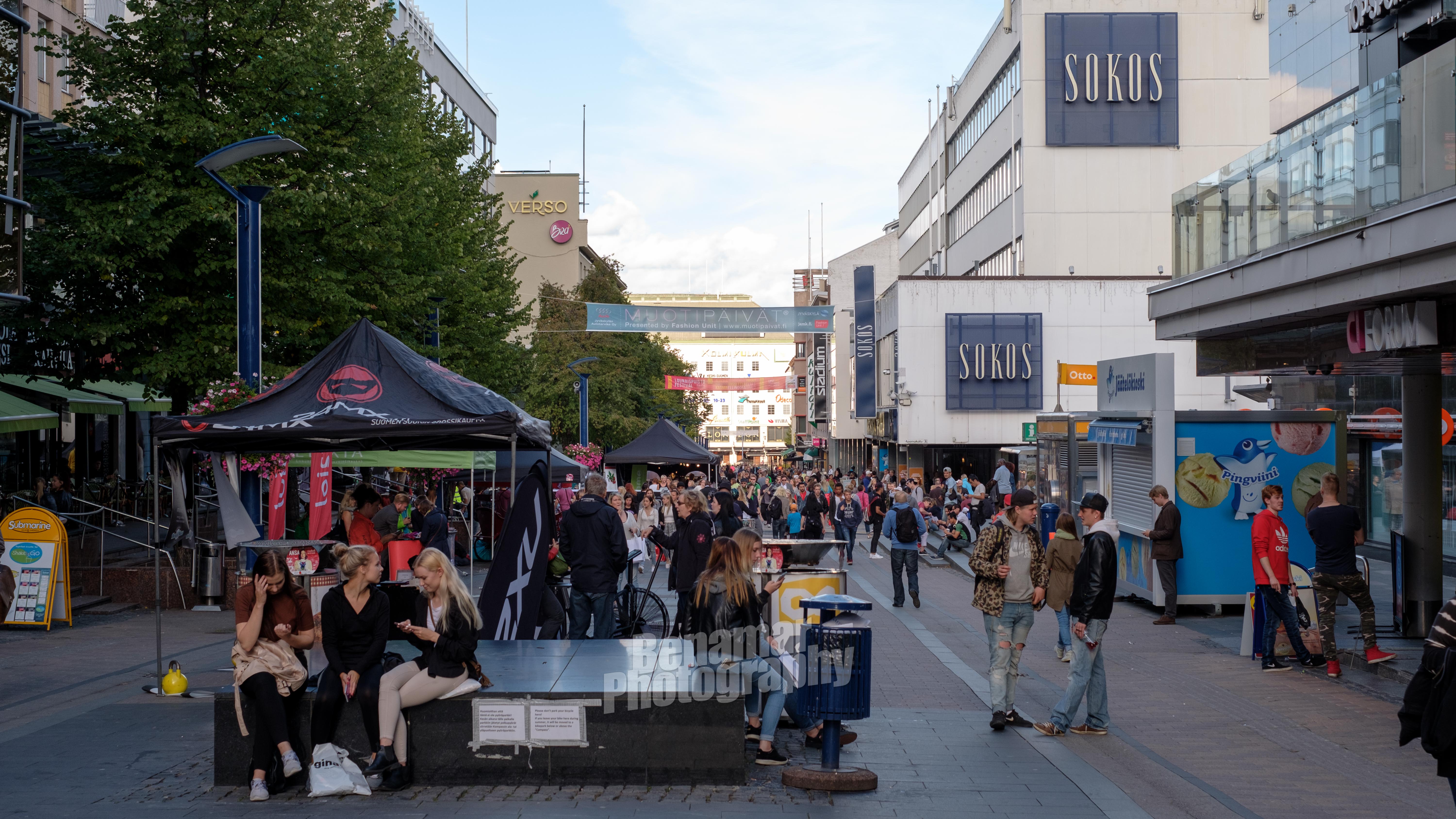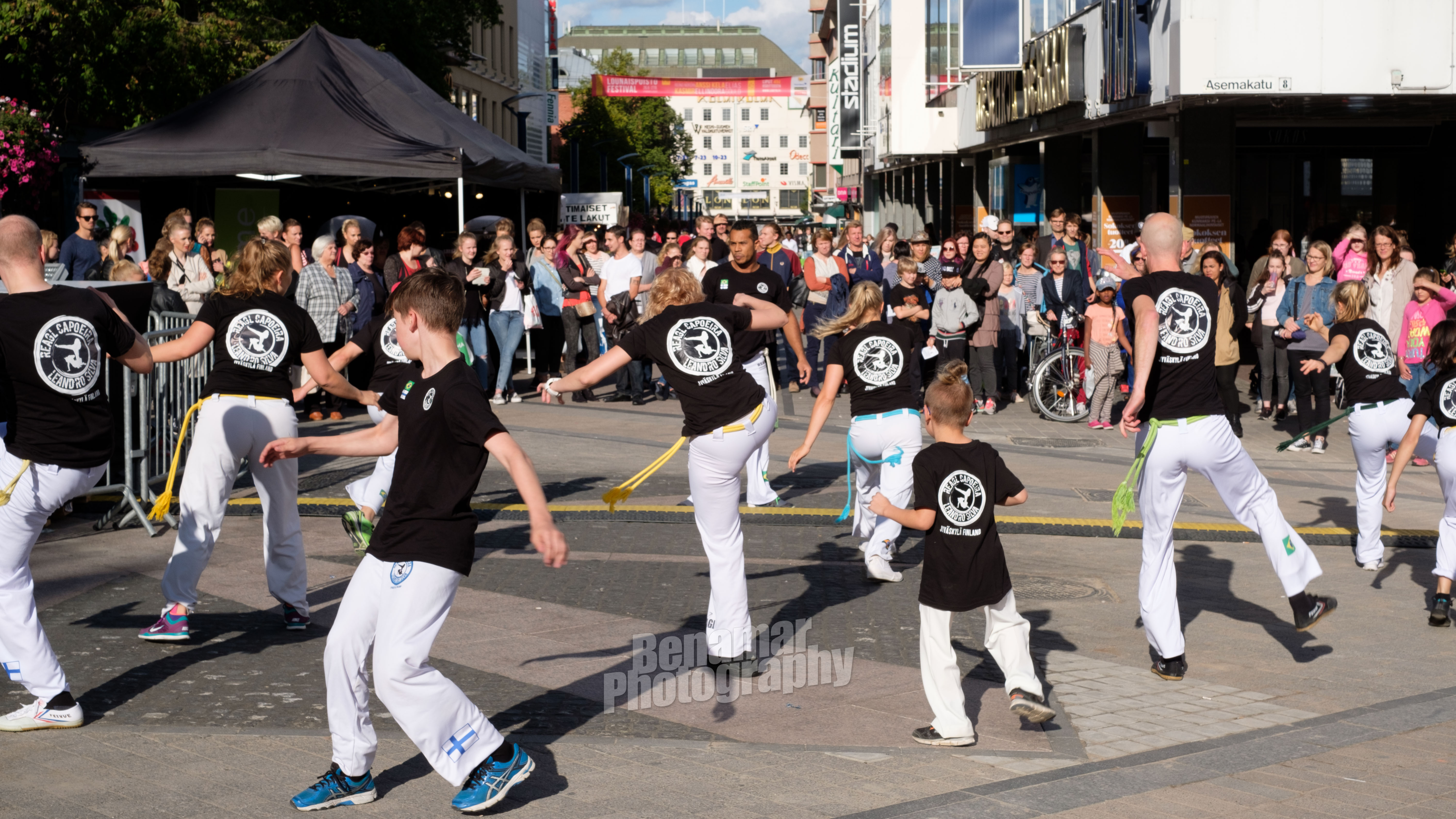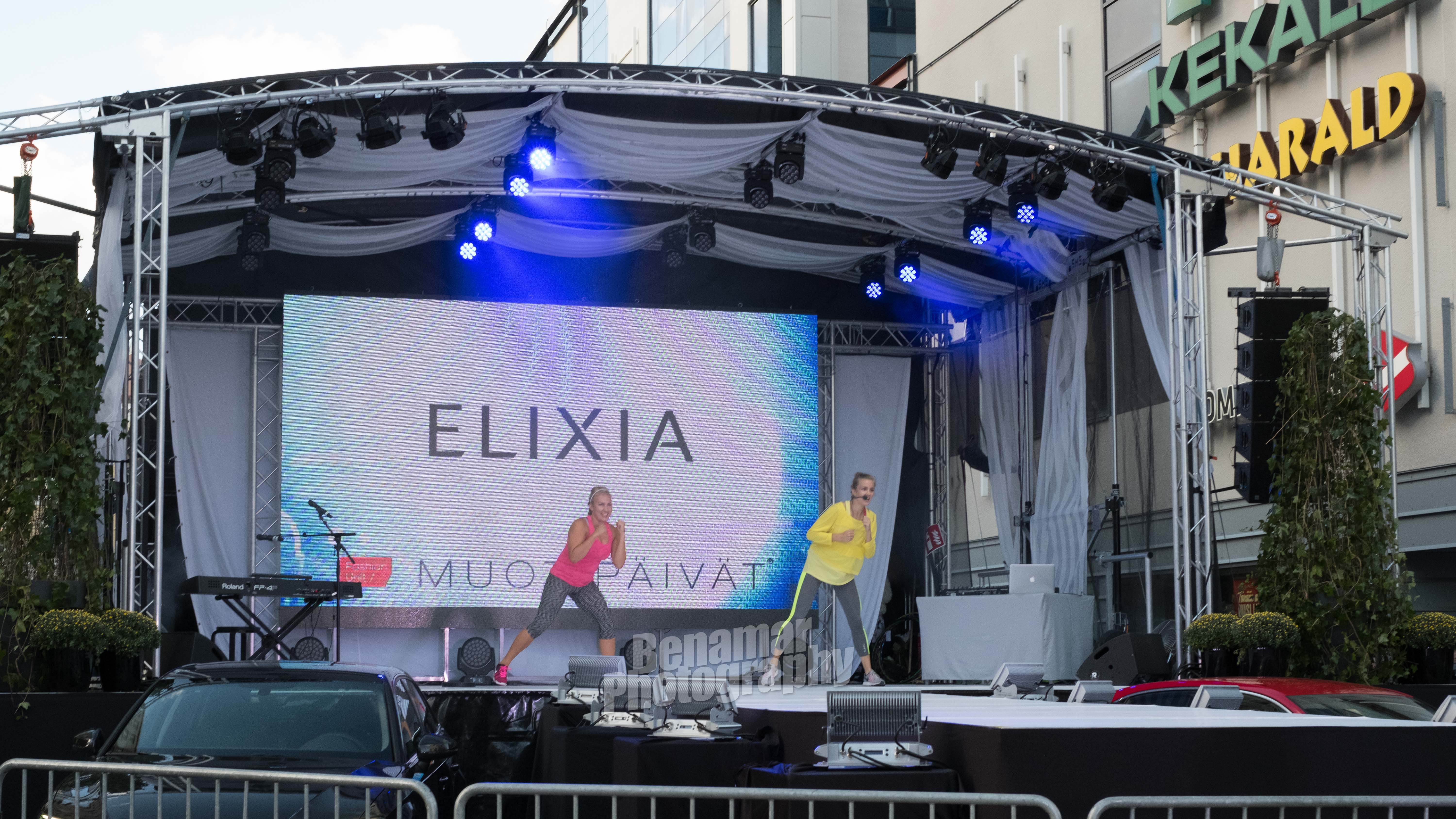First things first
This is not a review of Fujifilm X-Pro2, because there are enough of those already. I did not shoot brick walls or measure anything, but took the camera with me to the streets. It’s no surprise to my friends and followers that I own a lot of different cameras and lenses. It’s a hobby, so I tend to take out different cameras and lenses out on a different day, depending on mood, weather and destination. My normal day consists of walking my way to work and back in the city center of Jyväskylä. My apartment is in the walking district, so all events and people are very, very close and going shooting doesn’t require a car nor bus. I walk 4 to 10 km every day (sans weekends), the average being around 5,8 km.
I carry a camera with me always. If I don’t have a real camera with interchangeable lenses, at least I have my iPhone 6S Plus. Not exactly ideal, but two rules:
- The best camera is the one you have with you
- A camera in the bag stays in the bag
I know it’s easy to take out a camera from your bag (or at least from mine), but you know you won’t unless there is something really special and chances are the moment went by while you were digging out the camera. This happens all the time to me unless I am holding the camera I have or have it at least on a neck or shoulder strap. Even the iPhone in my pocket won’t get used that much and when it does, it’s probably too late. I don’t “spray and pray” with my camera and most days I don’t take any photos just because there isn’t anything catching my eye or I’m too busy doing something else.
Early September day in Finland
Yesterday I had my Fujifilm X-Pro2 and Fujifilm 35 mm F1.4 lens with me. Nothing else, so no zooming, no huge resolution for cropping images and all the possibilities and limitations of the X-Trans sensor, which does not use the Bayer filter normally used in digital cameras today. X-Pro2 does not have an antialiasing filter either, meaning that Fujifilm is expecting the X-Trans sensor layout to handle Moiré effects. More on that later.

The old 35 mm F1.4 lens for Fujifilm is in my opinion better than the new weather resistant (not sealed), smaller and less expensive F2 version. It does not need software correction and has a lot more pleasing quality to it (software correction does not equal good optics). It’s the first Fujifilm X mount lens ever released and its autofocus is slower than on new Fujifilm lenses, although it’s now a lot better thanks to firmware updates Fujifilm has provided. It’s not exactly first choice when people think of portrait lenses, but I’ve found it very good in that respect. I have several full frame cameras, but I don’t feel like I absolutely need a 85 mm F1.2 on a full frame to be able to shoot portraits. On Fujifilm the closest lens to that is the 56 mm F1.2, which is effectively a 85 mm F1.8 on the Fujifilm crop sensor. I haven’t bought the lens as I have several 50 to 58 mm manual lenses that are enough for the job, if needed. Anyway, yesterday I had the 35 mm F1.4, which has a field of view like a 50 mm F2.0 on a full frame camera (or whatever, looks good to me). I haven’t used the X-Pro2 a lot yet, since I had (and still have) the X-Pro1 until last week. X-Pro2 is very much like the X-Pro1, meaning that it’s easy to get good white balance and better colors. Although it’s supposed to have 14 bit RAW images, I get too many blown highlights than I’m used to with for example my Leica M9 or Leica M240.
How to get models for portrait shooting if you’re into it? Just ask people on the street. It’s a good way to make new friends, have more social contact outside your workplace and step outside your comfort zone. Asking doesn’t hurt and it gets easier the more you do it. It’s surprising how many like a photo taken and see it how it looks like with a good camera and lens instead of a smartphone. No, I don’t ask people for portraits when I have only my iPhone with me.

Although it’s early days of September in Finland and therefore early autumn, the days are still bright enough to be a bit troublesome for the X-Pro2 in the hands of a person who has used it only for a week. Whenever there’s sky somewhere and I don’t expose the image to highlights, the sky gets easily blown out. The photo above isn’t the best example, since it’s what is left after editing the blown out sky. I will have to practise more with this camera to get more consistent results, since I know it’s a better camera than I see now. I’m too used to my Leica M9 and M240, the first of which is very much film like and even though it does not have even near the dynamic range of the new X-Pro2, it’s still a very capable camera I absolutely love. Thankfully I don’t skimp on the back screen and look at the photos only if I have asked someone to have a picture taken and then show it. Deleting photos based on the 3″ screen is a very bad habit and it slows you down. Editing and deleting are best done on a computer, so I expect the camera act like a film camera, I see the results later.

It’s not unusual to see events in the walking district in the center of Jyväskylä. At least during summer there is something happening almost every week and even when there isn’t, it’s still more or less full of people, being a beautiful place without cars. Yesterday it was beginning of a fashion weekend, so that gathered people even more than Pokemon Go does.

REAGL Capoeira Jyväskylä (with Leandro Silva) was performing yesterday on Kompassi (or Compass) in the centre of walking district. I did not spend enough time there to see what other there was yesterday (or today, since the event is still continuing). Nice to see something else than below average street players or “beggars” (organized crime if you ask me) for a change.
Seeing X-Trans sensor’s ugly side

The image above is an example of a subject very difficult for Fujifilm X-Trans sensor. If you zoom the image to 100%, you can see that the background screen is rendered in an absolutely horrible way. I used latest Adobe Lightroom to process the RAW image, so I don’t know if there is a software that could salvage an image like that. But to be honest, this wouldn’t be an easy task for any camera with enough resolution. For comparison, I took an iPhone shot of the same stage. The lights were blown out on a Bayer sensor as well and the background screen looks bad, although not as bad due to lack of resolution and sharpness.
More thoughts on X-Pro2
Maybe I should post a more thorough article about the Fujifilm X-Pro2 when I’m done training with it. I still feel like an amateur with it and do not always get the result I expect. It’s not the camera’s fault, I just am more used to my old Leica’s and manual focusing. I get even focusing and depth of field wrong more often on the X-Pro2 than I do on the Leica M240, just because it handles differently and I’m not using the X-Pro2 on fully manual mode, which I maybe should. I might update this article later with more photos, since I took plenty during the one hour shooting. I’m now just too tired to edit more photos for the web.
Update: There is a follow-up to this article released in January 2016. I will write more about my experiences with this camera now and then after I’ve got a feeling I’ve learned something new about it. After only a few months the only major thing apart from the X-Trans sensor challenges is the vulnerability to optical shake. In my opinion, this was introduced with the 24-megapixel sensor, meaning that the pixel density is causing the trouble. The way to avoid this is to use higher shutter speed, or optical image stabilisation provided your lens has it. I love my Leica’s, but when it comes to autofocus, Fujifilm is the next best thing.



